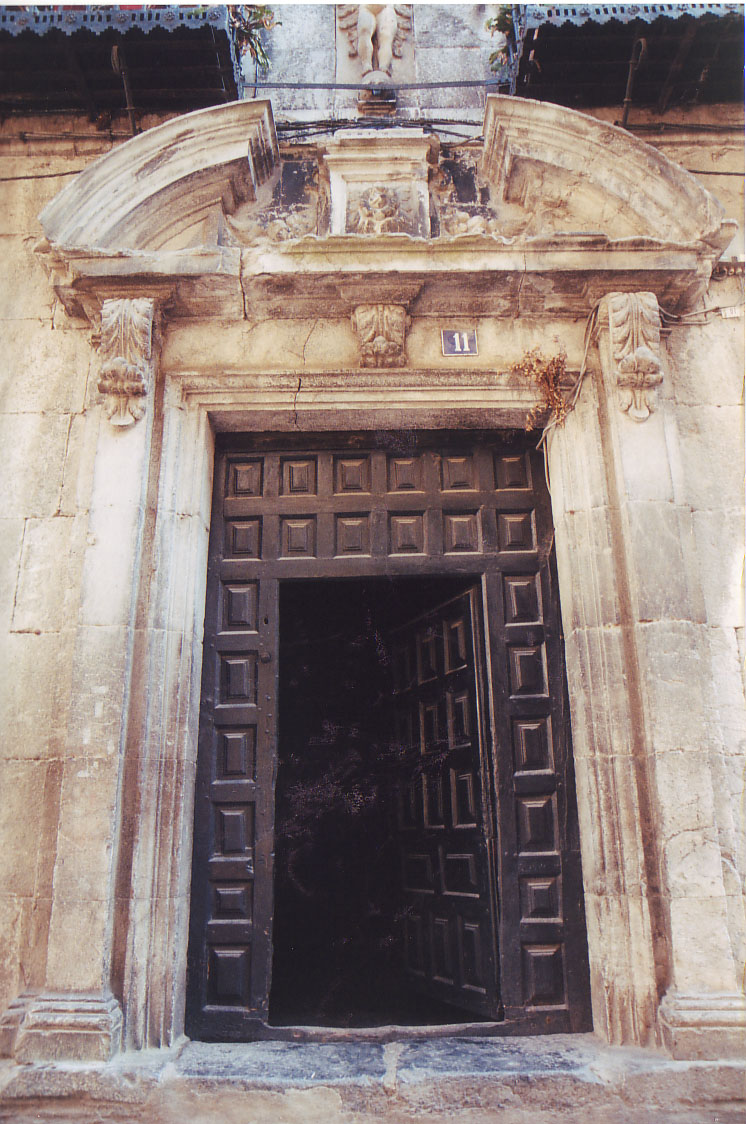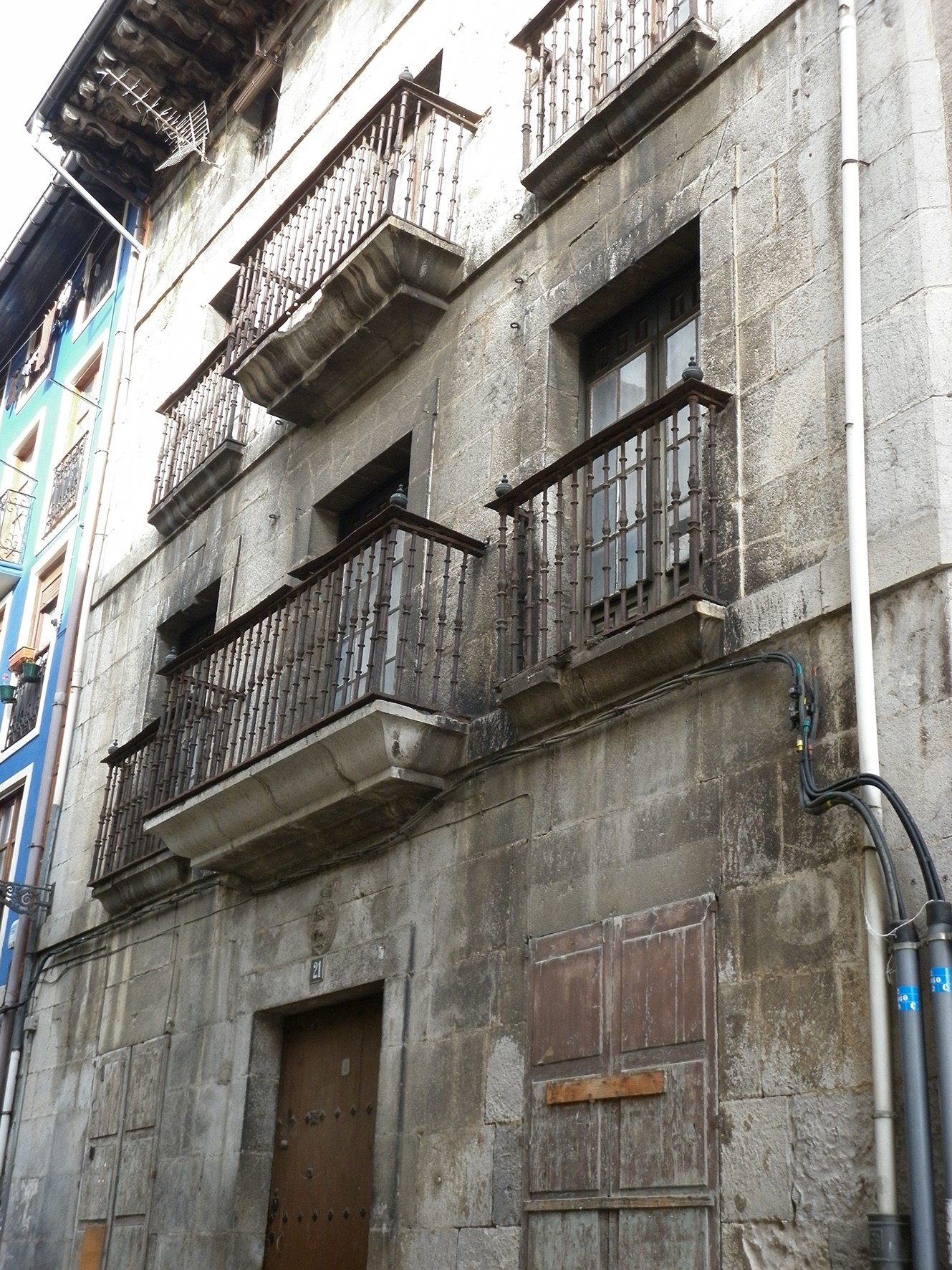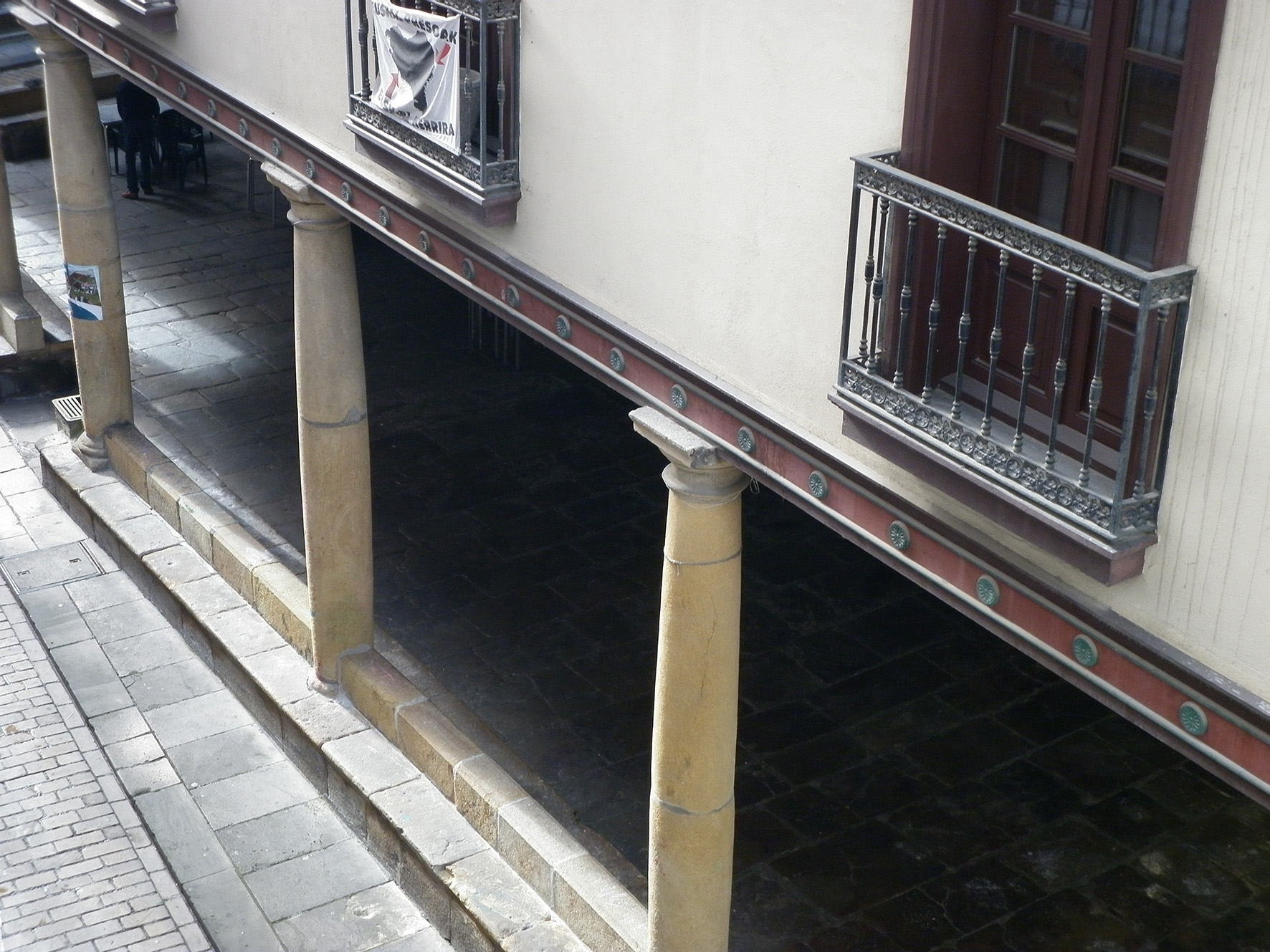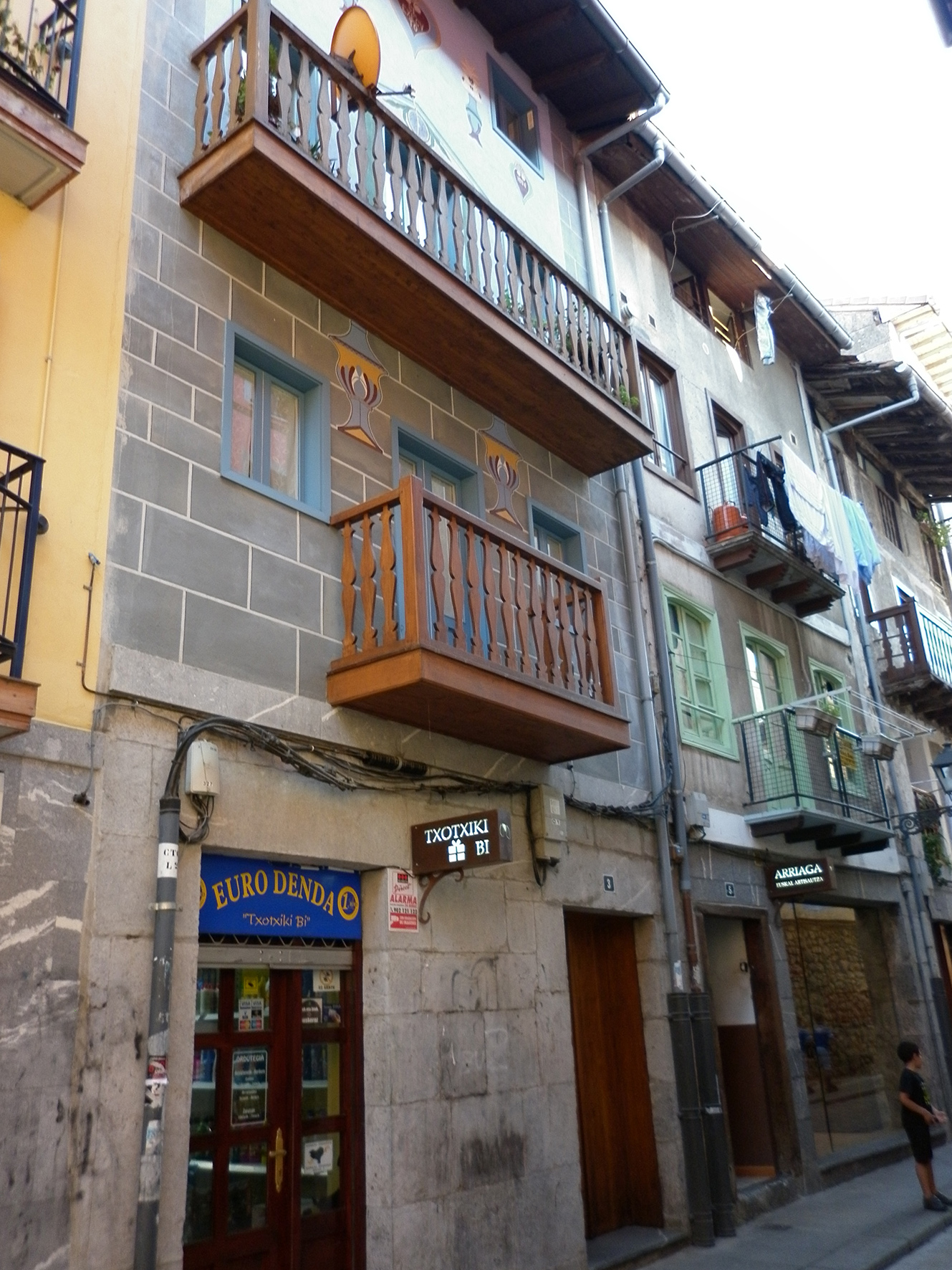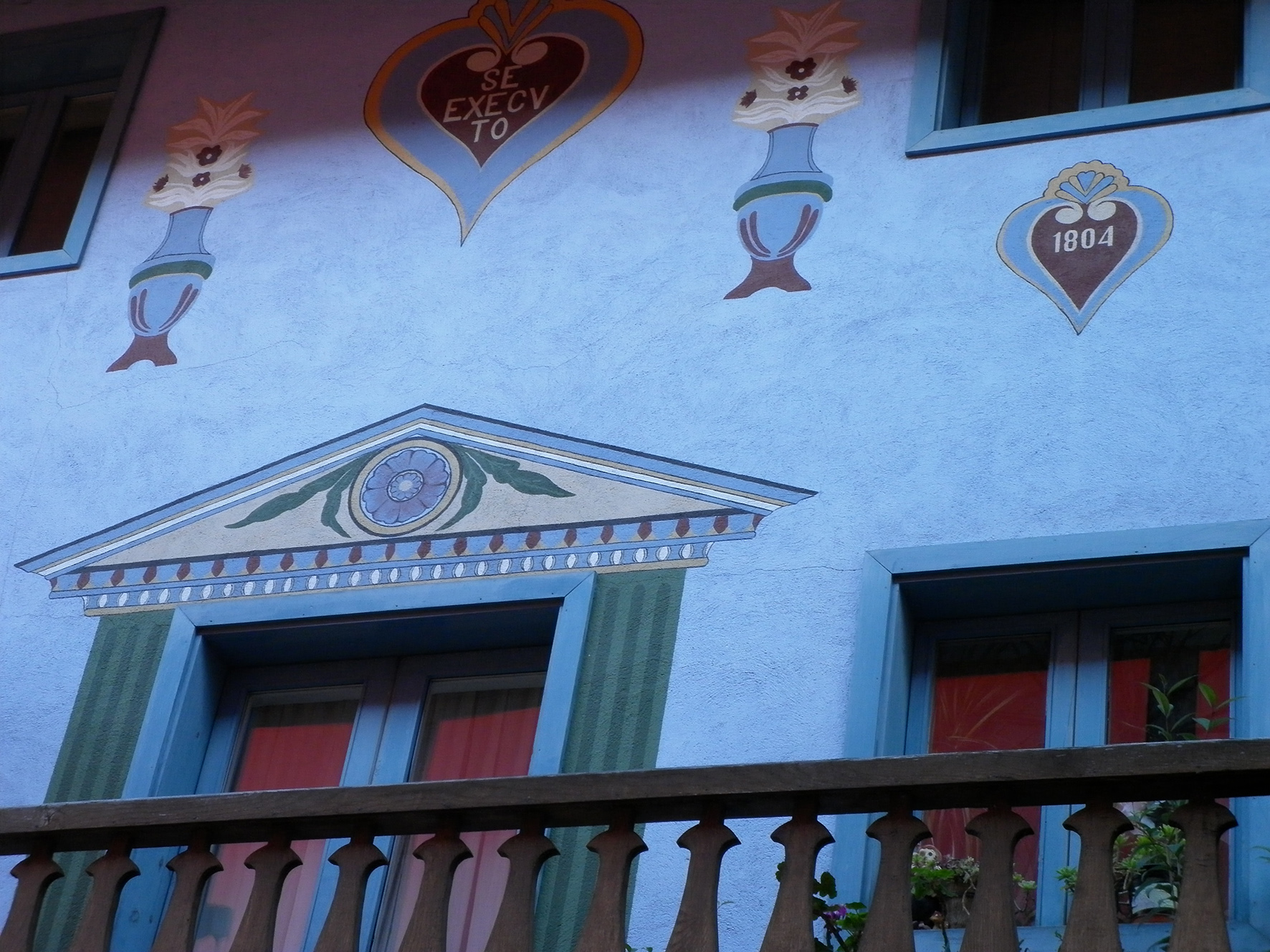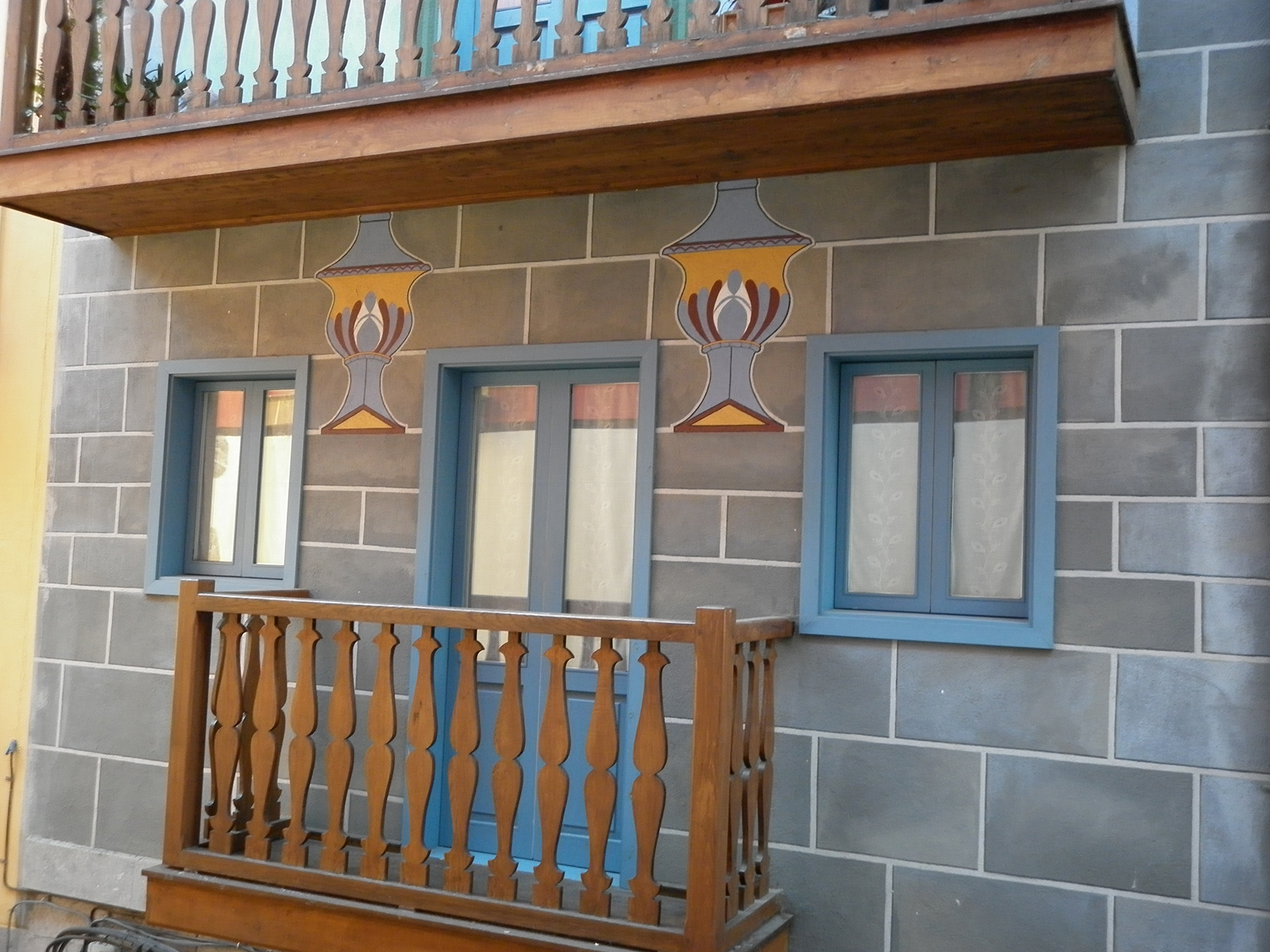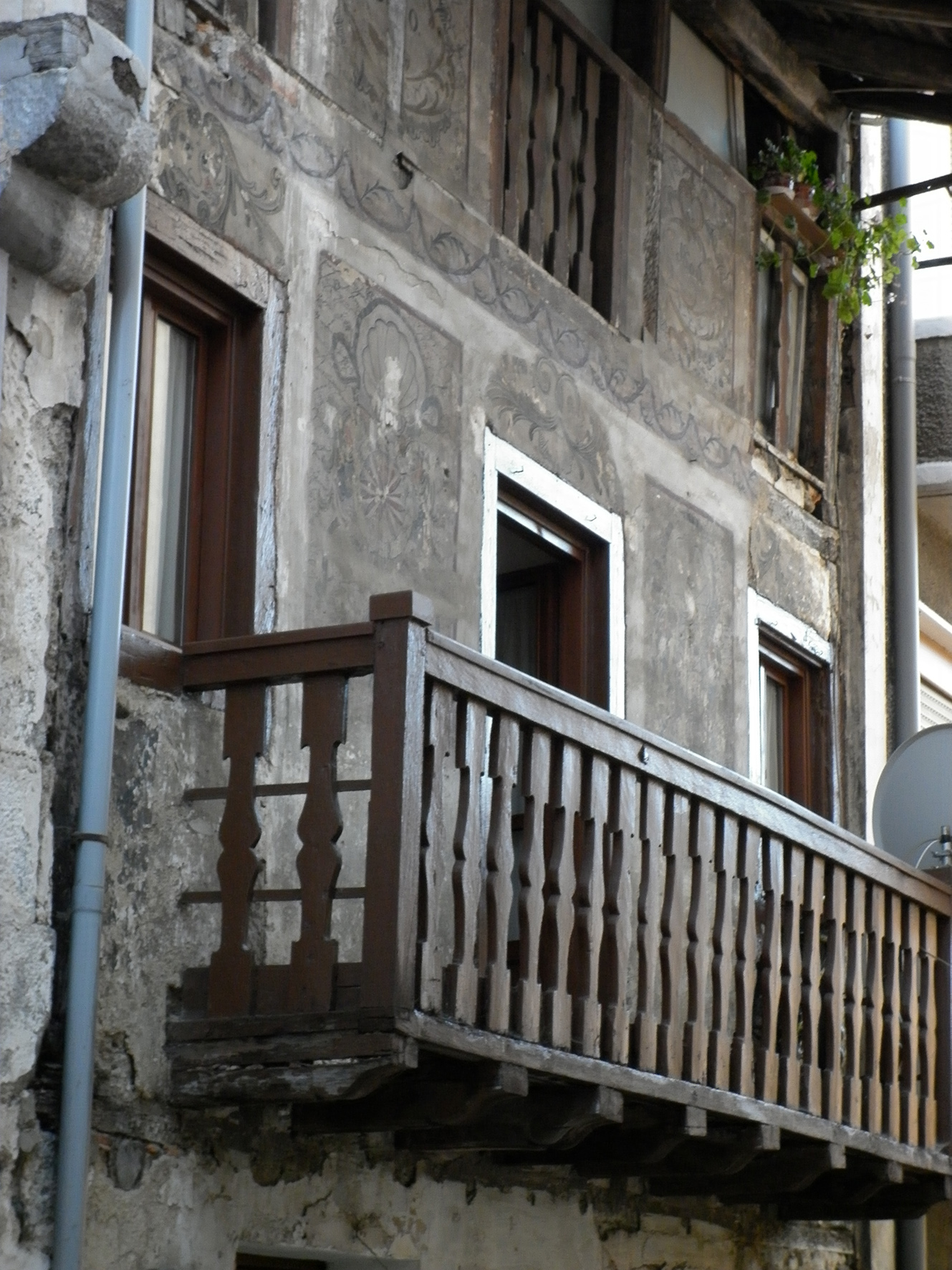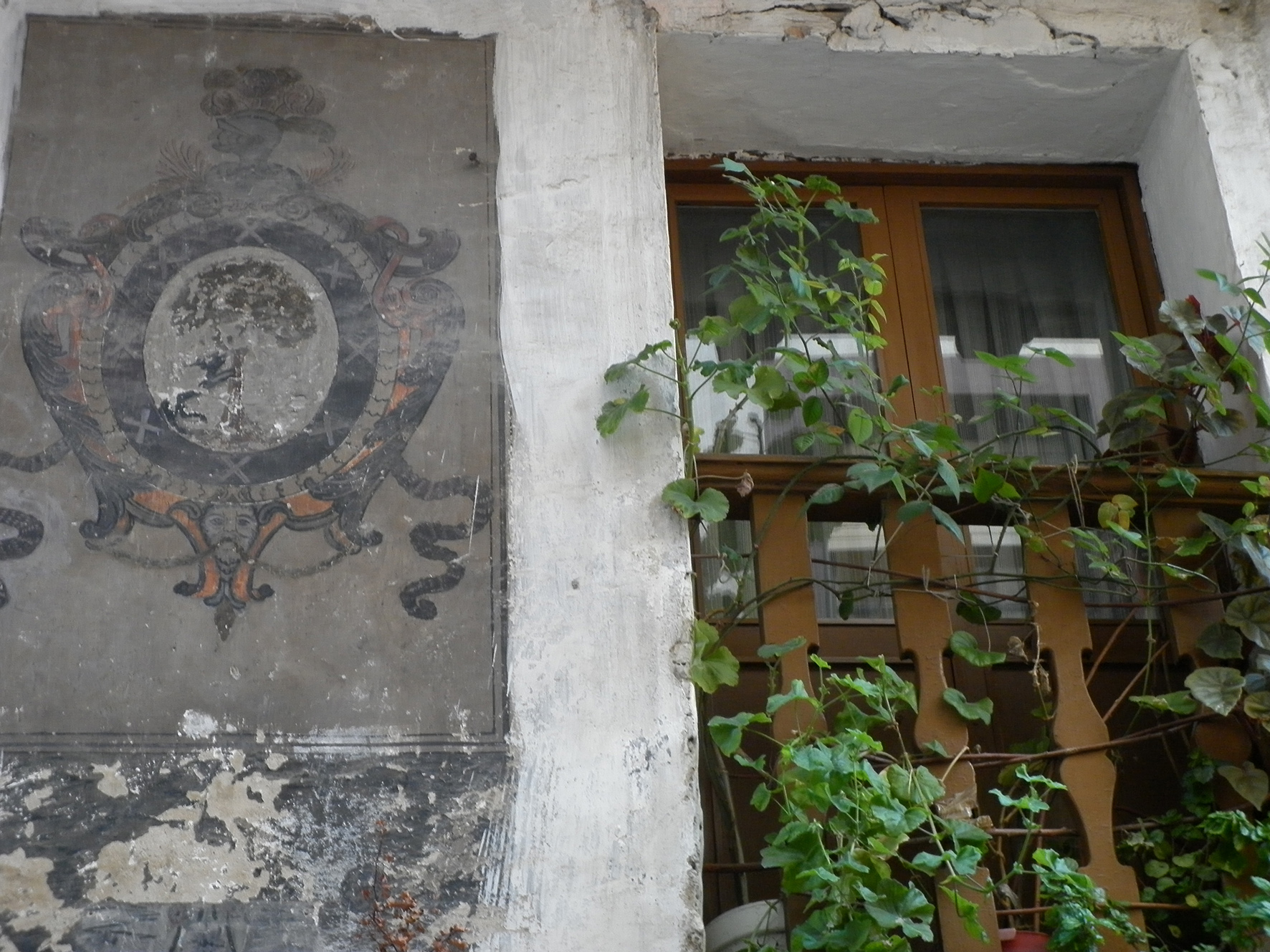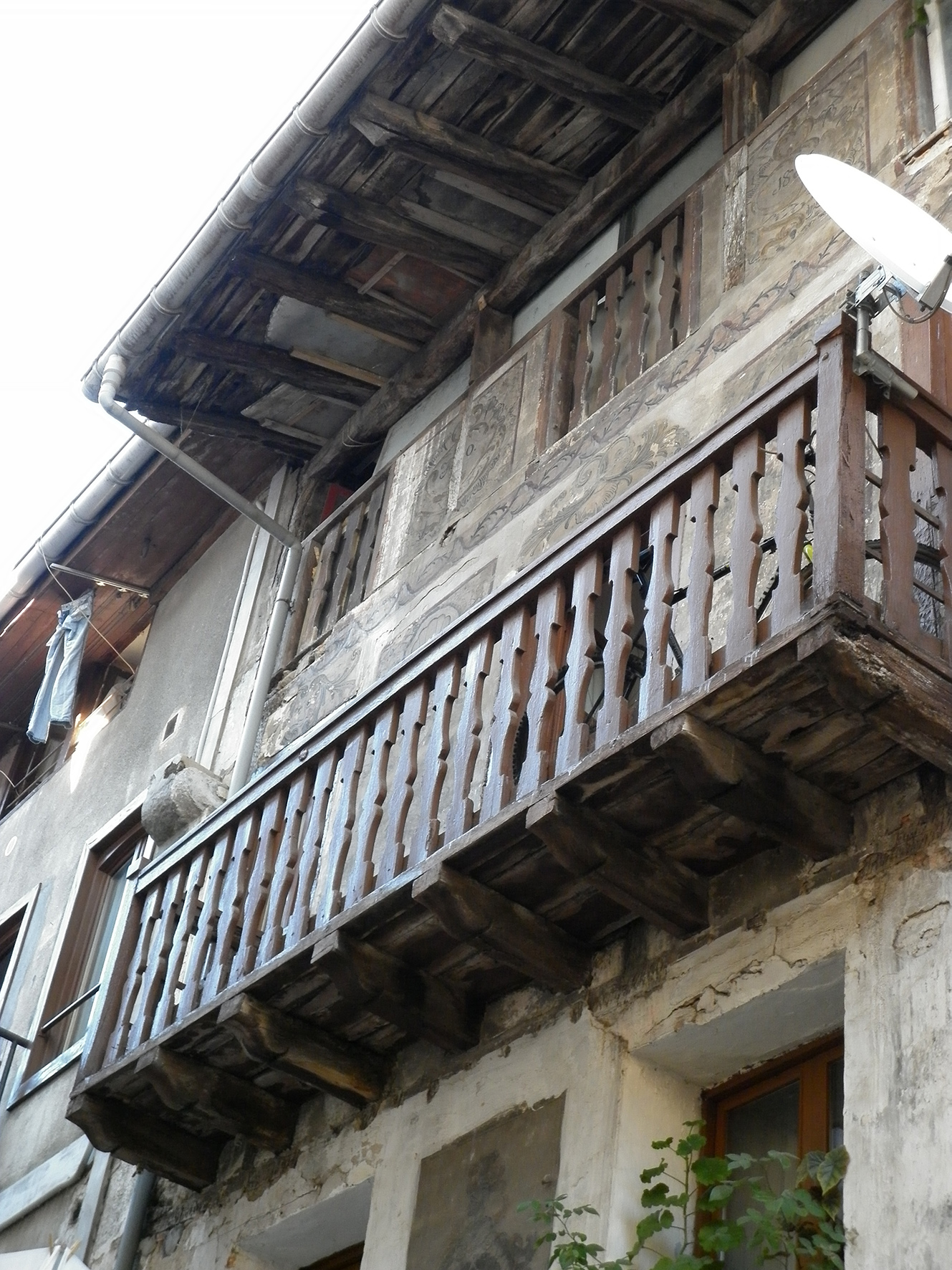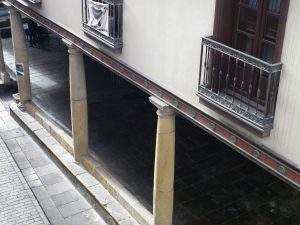
Kontzekupe
Old Town Hall. Until the construction of the town hall, the council that governed the town held its meetings in the corner end of Erdikokalea, in Xemein, and in the church of San Pedro de Elizabarria. The biography of this building, which today is the headquarters of the Justice of Peace, dates back to the 16th century. It is a property that has undergone different phases in its construction. Since the 18th century it was agreed to expand the first existing building so that in the 19th century it could proceed with new reforms and distributions in which the architect Rafael Zavala intervened.
On the ground floor there is a wide open portico supported by eight baroque sandstone columns from Mount Oiz made by Juan de Basaybar and Sebastián de Leixardi between the years 1636 and 1646. The first floor overlooks Guenkalea, Erdikokalea and Zeharkalea streets with wrought iron balconies. The portico, next to the main door, houses a canvas of the Immaculate Conception and a sign with the following text: Don Francisco Aguriano Bishop of Calahorra y la Calzada grants 40 days of indulgence to anyone who prays a Hail Mary or Hail to this Holy Image. The image and the text evoke the one who was the Patroness of the town from the 17th to the early 20th centuries.
The tower, from the 19th century, is included within the set of the old town hall; its construction, as well as the machinery of the clock, has undergone several reforms. The clock continues to provide the time and the tower is in excellent condition.
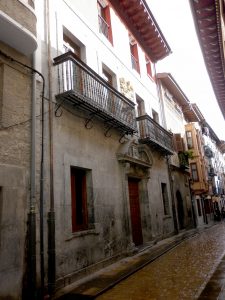
Andonegi Palace
It is a baroque building whose execution is attributed to the architect Lucas Longa. Above the access, topped by a curved and split pediment, lays the Murga’s arms shine; a nude figure of a child holds the shield in sandstone, oval shape, with five poplar leaves and a border of thirteen eight-pointed stars. Its facade stands out for the ashlar masonry, the excellent forging of the balconies, the carvings of the eaves and the horse iron rings on the ground floor.
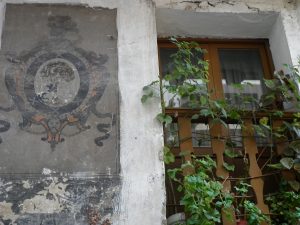
The Painted Houses
On this street there are two residential houses that maintain painted decoration on the wall of the main facade. Zeharkalea nº 3 has a triangular pediment with a circle inscribed on the lintel of the central span of the second floor. On the sides there are two hot air balloons similar to those from the late 18th century. In the upper part, a legend is distributed in three circular borders. The last one covered by a recent work. They say: SE EXECUTO (built) and AÑO (year) without seeing the one that has the date. The bottom of the wall is painted with simulating ashlars. The house that occupies nº 7 on this same street also maintains decorative paint on its walls. On the first floor, you can see various heraldic features like rockery and plants and on the second floor, faces appear above the windows. Two borders finish the facade with: AÑO and 1985. This building has been recently demolished and its facade rebuilt with reconstituted paintings.
Zehar kalea
48270 Markina-Xemein


